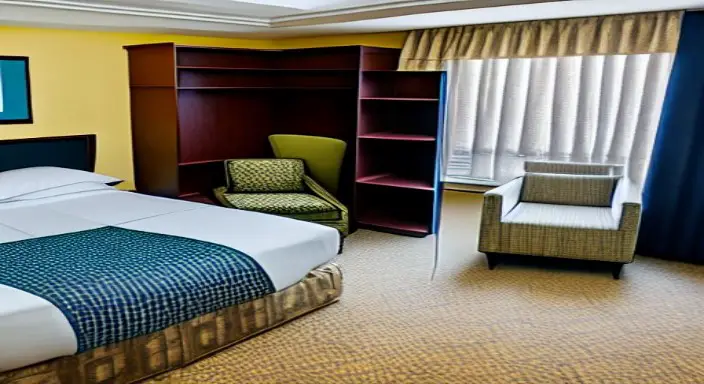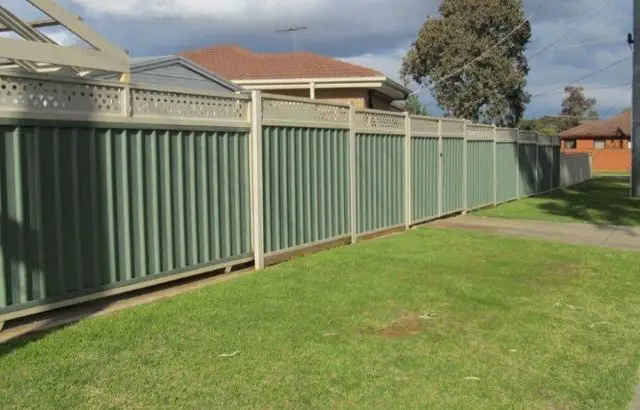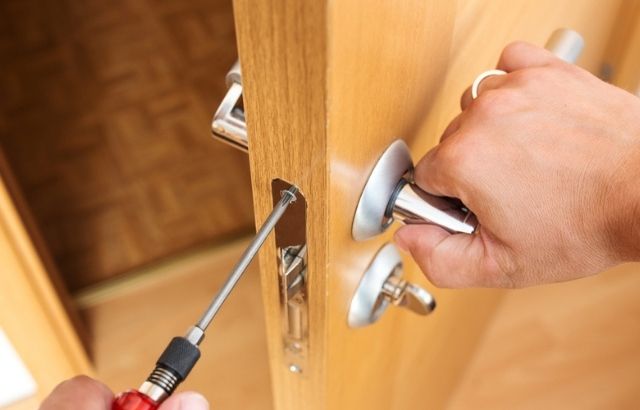Carbon monoxide (CO) is a silent and deadly gas that can cause serious harm to human health and, in some cases, even lead to death. It is a colorless and odorless gas produced by the incomplete burning of fuels or from faulty equipment such as heating appliances, fireplaces, and generators.
As such, carbon monoxide detectors are an absolute necessity in every home or building to detect the presence of this hazardous gas.
However, the effectiveness of these detectors depends largely on where they are placed in the house:
- Kitchen
- Basement
- Living Rooms
- Bedrooms
- Exhaust Fans
- Stairways
- Bathrooms with showers only
- The Garage
- Guest Rooms
This Home Affluence blog post will explore the best locations to install carbon monoxide detectors in your home or building to ensure optimal protection against carbon monoxide poisoning.
We will also provide essential information on the types of detectors available, their features, and what to look for while choosing one.
Ensuring that your carbon monoxide detectors are functioning correctly and are placed in the proper locations can save you and your family from catastrophic harm.
Where Should Carbon Monoxide Detectors Be Placed In Your
Carbon monoxide (CO) is an invisible, odorless, and tasteless silent killer.
Fortunately, carbon monoxide detectors can help you and your loved ones stay safe from this poisonous gas in your home or workplace.
However, you require more than simply having a detector; installing it in the right place is crucial for maximum effectiveness.
According to the National Fire Protection Association (NFPA), at least one CO detector should be installed on every level of the home, including the basement and outside each sleeping area.
It does recommend placing detectors at least 10 feet away from fuel-burning appliances, such as gas stoves or heating systems, and not in areas where air currents or drafts can interfere with their operation.
Regular testing and maintenance of these detectors are essential to ensure their proper functioning and timely detection of harmful levels of CO gas.
1. Kitchen

For optimal safety, it is crucial to be mindful of the placement of carbon monoxide detectors in your home.
While it is commonly understood that detectors should be installed near sleeping areas, it is often overlooked that the kitchen should be equipped with programmable thermostats for additional protection.
The kitchen is a prime location for potential carbon monoxide leaks, as gas stoves, ovens, and other appliances emit carbon monoxide during regular use.
By installing programmable thermostats in your kitchen, you can quickly detect and respond to any dangerous levels of carbon monoxide in the area.
Installing the thermostat away from appliances near the kitchen ceiling is recommended for optimal monitoring.
It is important to remember that programmable thermostats are not a substitute for carbon monoxide detectors; both are necessary for comprehensive home safety.
2. Basement

As we prioritize energy efficiency in our homes, programmable thermostats have become an increasingly popular addition to modern households.
However, the thermostat’s location can impact its effectiveness in regulating the temperature throughout your home.
The basement is one place where programmable thermostats can be beneficially placed.
Basements are typically cooler than the rest of the house, making them an ideal location for thermostats to warm up the space efficiently.
Additionally, since most HVAC systems are located in the basement, programmable thermostats installed in this area can easily control the temperature throughout the house.
Placing a programmable thermostat in your basement can effectively manage your home’s temperature, increase energy efficiency, and save money on energy bills.
3. Living Rooms

When considering safety and convenience in your home, programmable thermostats are one of the best options available.
They offer the ability to manage your heating and cooling systems efficiently, saving you time and money on your utility bills.
For optimal usage and safety, it is essential to consider the correct placement of your programmable thermostats. Living rooms are one of the best areas to place a programmable thermostat since they are often the most frequently used room in the home.
In addition, guests gather in living rooms, making it easy to adjust the temperature to a comfortable level for everyone.
Placing a programmable thermostat in living rooms also provides easy access to the controls, allowing you to adjust the temperature according to your needs.
By strategically positioning your thermostats in your living rooms, you can help ensure maximum comfort and safety in your home.
4. Bedrooms

While programmable thermostats are becoming increasingly popular among homeowners, choosing the right location to place them is important.
Bedrooms are a smart choice as they are one of the main areas where we spend time and regulate our body temperature.
Additionally, if someone in the household is sick or recovering from an illness, it’s essential to have a comfortable temperature in their bedroom.
By placing a programmable thermostat in these spaces, you can easily control the temperature to save energy and ensure maximum comfort.
5. Exhaust Fans

When it comes to maintaining optimal indoor air quality, proper ventilation and efficient temperature control are essential.
One way to achieve this is by installing exhaust fans in strategic areas of your home.
Doing so can improve air circulation, prevent moisture buildup, and reduce the risk of mold growth.
However, installing programmable thermostats in conjunction with your exhaust fans is advisable to take your ventilation system to the next level.
It will allow you to control your home’s temperature and reduce energy consumption by only heating or cooling the needed areas.
Consider installing exhaust fans and programmable thermostats in high-usage areas such as the kitchen, laundry room, and bathrooms, where humidity levels tend to be higher, and maintaining optimal temperatures is critical.
6. Stairways

When considering where to place programmable thermostats in your home, it’s important to consider factors like room usage and zoning.
Ideally, thermostats should be located in frequently used areas, away from direct sunlight or drafts, and not behind doors or in areas with poor ventilation.
It’s also important to consider zoning your home and placing thermostats strategically to maximize energy efficiency and comfort.
For example, if you have multiple floors or areas with different heating or cooling needs, zoning allows you to control them separately with customized schedules.
By strategically placing and utilizing programmable thermostats in your home, you can save energy and money and improve your overall indoor comfort.
7. Bathrooms with showers only

Regarding home safety, it’s important to consider more than just installing carbon monoxide detectors.
Another essential element to consider is the placement of programmable thermostats.
These devices can help you save energy and money on your utility bills by adjusting your home’s temperature according to your daily routine.
In addition to installation in the main living areas of your home, consider installing programmable thermostats in bathrooms with showers only.
These spaces can often become hot and humid, leading to moisture buildup and mold growth.
Utilizing a programmable thermostat can maintain a comfortable temperature while also managing humidity levels to prevent potential health hazards.
When installing programmable thermostats, it’s important to follow manufacturer guidelines and to have a trained professional handle the installation for optimal safety and functionality.
8. The Garage

The garage is one place in your home that you might only sometimes consider when thinking about indoor temperature management.
However, high temperatures in your garage can have a domino effect on the overall temperature of your home. Programmable thermostats can offer an effective solution by allowing you to regulate the temperature of your garage and other areas of your home.
Not only can this save you money on energy bills, but it can also provide added comfort and convenience.
When installing a programmable thermostat in your garage, follow the manufacturer’s instructions and place it where it can accurately sense the temperature.
Proper placement and usage ensure your home remains at a comfortable temperature year-round.
9. Guest Rooms

While it is important to consider where carbon monoxide detectors should be placed in your home for safety reasons, it is also essential to consider where to place programmable thermostats.
Specifically, guest rooms are a great option for placing smart thermostats because they offer numerous benefits.
In a guest room, programmable thermostats can help you control the temperature efficiently without changing it manually.
It means you can save energy by setting the temperature to a lower or higher degree when the room is not being used and then adjusting it before guests arrive.
Additionally, programmable thermostats give you more control over temperature and humidity levels, which can significantly impact your guests’ comfort during their stay. By placing programmable thermostats in guest rooms, you can prioritize guest comfort and save energy.
My Opinion
Carbon monoxide is a silent killer, and installing carbon monoxide detectors is crucial to protecting your family from this deadly gas. Knowing where to install your detectors is just as important as having them in the first place.
Follow the guidelines provided by the manufacturers and the National Fire Protection Association to ensure that you have the proper number of detectors installed in the correct locations in your home. It’s a small investment that can save lives.
This makes it essential to install carbon monoxide detectors in every home. The placement of the detector can play a key role in ensuring your and your family’s safety.
Installing detectors in the right places gives you an earlier warning to take action in case of any emergency. Remember, prevention is always better than cure, so install the carbon monoxide detectors in the right place and regularly check them to ensure they function correctly.




